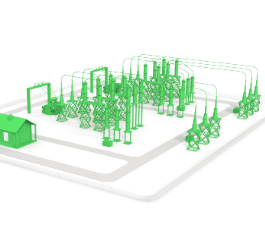This audio was created using Microsoft Azure Speech Services
IT equipment deployed in small businesses and in branch offices of larger businesses are often installed in areas that are less than conducive to proper performance. Maybe it’s a cramped closet, a small room jammed with supplies and who-knows-what, or even a section in the middle of the office floor.
In many cases, that IT equipment is of no less importance to the business than servers housed in a state-of-the-art data center are to a major corporation. In either case, if the servers go down, the business may well lose money or even customers. Don’t wait for a catastrophic even to occur to take steps to improve the IT equipment’s environment and supporting infrastructure.
The Schneider Electric white paper, Practical Options for Deploying IT Equipment in Small Server Rooms and Branch Offices, outlines best practices with respect to power, cooling, racks, physical security, monitoring and lighting. To give you a taste of the paper, let’s look at advice for just two areas, power and racks.
Power
Powering IT equipment is typically not as simple as plugging it into a wall outlet because they require uninterruptible power supplies (UPS), to prevent damage or data loss in the event of a power outage, as well as appropriate power distribution. A UPS with a capacity greater than about 2,200 volt-amperes (VA) can’t be plugged into household (or office) wall outlets, known as 5-20 receptacles. A 3kVA system typically requires an L5-30 receptacle, where the “L” represents a locking plug, and UPS systems greater than about 6kVA are typically hardwired from an electrical panel – meaning you need an electrician.
In general, you’ve got two options for power distribution:
- Plug IT gear into the receptacles on the back of the UPS
- Plug IT gear into a rack power distribution unit (PDU), which is plugged into the UPS. This method requires that IT gear be mounted in a rack (discussed just below)
Some IT equipment, notably servers, often is dual-corded, so they can – and should be – plugged into separate UPS systems or rack PDUs for redundancy. Even better, plug the UPSs into separate circuits, each fed by different breakers. It’s also a good idea, especially for branch offices, to use UPS systems that can be managed remotely, so the IT group can get alarm notifications about issues such as low or bad batteries, overloads, overheating and the like. In addition, some rack PDUs have switchable outlets, so a faraway IT person can monitor equipment status and remotely reboot a hung server, for example.
Racks
While small businesses may consider it difficult to justify the cost of a rack enclosure, a rack is a fundamental structure for IT gear. It enables proper organization of equipment and cables, to help prevent cables from turning into a rat’s nest, and when you avoid the rat’s nest of cables, you’re likely to reduce downtime from human error.
Racks are recommended for loads greater than 2kW because they promote proper airflow for cooling IT equipment by helping to isolate hot and cold air streams such that IT equipment is breathing in cooler air.
Some racks have locking doors, which provide additional security – especially important in open office areas or in unlocked server rooms. Enclosed racks can also include noise dampening, so the fan noise from IT equipment doesn’t distract office workers.
Just because IT equipment isn’t housed in a traditional data center doesn’t mean it’s not vital to the business. To learn more about proper protection techniques, check out Schneider Electric white paper number 174, Practical Options for Deploying IT Equipment in Small Server Rooms and Branch Offices.



Conversation
Rack Security
12 years ago
By locating these services in one place and sharing them between the blade computers, the overall utilization becomes more efficient. The specifics of which services are provided may vary by vendor.
Rack Security and Data Security are the utmost important fact to be ensured with in order to run the Servers effectively and reliably.